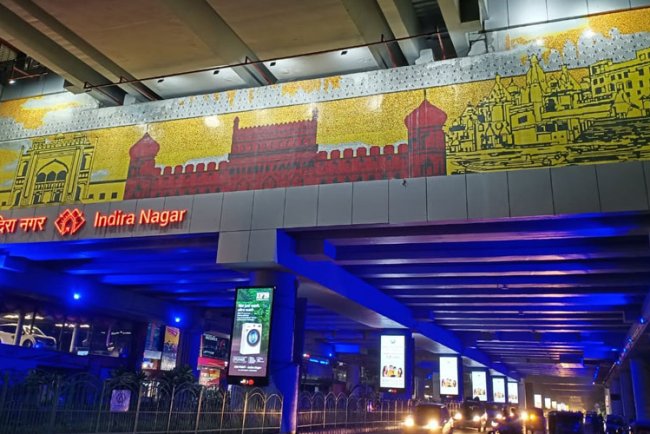Millions of people visit Ujjain every year as the location of the world's largest mass spiritual gathering, the Kumbh Mela. If you are looking to visit, below is a list of some of the exciting things and places that one has to see in this lively city.
Top places to visit in Ujjain Madhya Pradesh
Here is a detailed and well-researched list of the top places to visit in this scared city:
Mahakaleshwar Temple
A temple standing at the top of the list of favorites in India, the Mahakaleshwar Temple is a temple of Lord Shiva. It is one of the twelve Jyotirlingas, a point of great spiritual importance.

The temple has earned its reputation on the so-called Bhasma Aarti, where the statue is rubbed with ash around evening hours. The plain design of the exterior and spiritual feel of the temple is a major attraction to the town of Ujjain.
Tourists are helped or advised to catch a glimpse of Bhasma Aarti which is related to rich, cultural, and spiritual forces connected to Lord Shiva. Becoming a part of this Aarti is termed as the one-in-a-lifetime experience for people who’ve witnessed it.
Kal Bhairav Temple
Among these religious sites, Kal Bhairav Temple famous for Lord Kal Bhairav is another significant temple in Ujjain. What stands out most in this temple, is a legal custom there where the people offer wine to the gods which is regarded as being inherited from ancient periods.
Due to the enigmatic nature of the temple, more people are coming forward to watch this unique tradition. It is also a place of historical interest due to the paintings that are found on the walls of the temple.
It is the right combination of religious interests and ancient architecture.
Harsiddhi Temple
The temple dedicated to Harsiddhi, a manifestation of Shakti, is called Harsiddhi Temple. Its two tall pillars crowned with oil lamps are lit during festivals, making the temple look divine.
It cherishes a place of special sentiments to the devotees as it is considered a Shakti Peeth where Peeta of Mata Sati fell. A visit to this temple provides a rare opportunity to see the fort and the commitment and faith of people especially during the Navratri festival.
Sandipani Ashram
To go back to the time of early Vedic teachings, reach out to the Sandipani Ashram in Ujjain. It is believed to be the same place where Lord Krishna along with his brother Balarama and friend Sudama were studying under Guru Sandipani.
In the ashram, there is a holy pond known as Gomti Kund, where Krishna would invoke all the river goddesses for his master. The atmosphere of the ashram is calm and quiet, so the guests can learn about the spiritual traditions of Ujjain.
It is liked by the tourists interested to join in on the master and apprentice system of Ancient India.
Jantar Mantar
In addition to its significance in astrology, Ujjain is home to temples. The Jantar Mantar, which was built in the 18th century by Maharaja Jai Singh II, is a great destination for those who enjoy science and history.
Like the Samrat Yantra and Narivalaya Yantra, the Jantar Mantar was worn to observe the stars and make precise astronomical calculations. It is an architectural masterpiece and provides a glimpse into the Indian scientific evolution through the ages.
So, if you’re looking for something different from the spiritual places, Jantar Mantar is the right place in Ujjain, Madhya Pradesh for you.
Bhartrihari Caves
The lovers of folklore and mysticism should not miss the sight of Bhartrihari Caves. The historical rock shelters are considered the abode of the world-famous poet-philosopher Bhartrihari, the stepbrother of King Vikramaditya who had turned a recluse.
With long, thin, and twisting corridors the caves offer an element of excitement while at the same time depicting India’s topology related to the ancient monastic practices. This place is tranquil and serene and that makes it a good place for one to pray, meditate, or even ponder.
Gopal Mandir
Located in Ratnagiri district, Gopal Mandir is a prime example of Maratha archives and has huge silver doors. Baijabai, a queen from the Scindia region, built this shrine in the 19th century.
The confusing carving, the serene environment, and the historical value added to Ujjain tourism make it an interesting place to visit. Janmashtami is an important festival of this temple as several devotees come on this day to pay their respects to the deity.
Ram Ghat
Ram Ghat is among the few places in Ujjain that are mostly frequented by people in search of spirituality. Sited on the right bank of river Kshipra, it is a religious spot for the next Simhastha Kumbh Mela, which takes place every 12 years.

Ram Ghat is equally crowded throughout the year due to activities such as performing religious activities and taking baths in the river. One must try the evening aarti at Ram Ghat, where the lamps float to indicate the composed environment over the water.
Also Read :
Concluding Notes
Ujjain is not just a city but a spiritual experience that gives the tourists of India an insight into the past, present, and even the future. The principal deity of the town is Shiva, and the whole city of Ujjain is filled with mystery and history, be it the Mahakaleshwar Temple or the banks of the Kshipra River.
If you are a believer, a historian, or simply a tourist, it is more likely than not that you will never forget Ujjain. So get ready for a journey; set your goals and let the spiritual city of Ujjain captivate you with its charm and serenity.






















